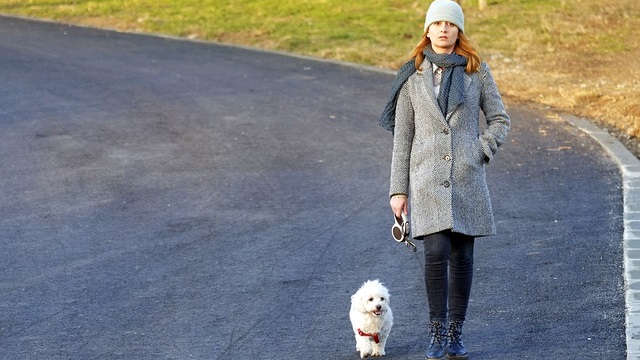As a dog owner, you need your pet to be physically active, and walking is the best way to assure this. Taking your pup for a walk on a pleasant day is lovely, necessary and beneficial. But most dogs are not trained for walking; they generally tug and pull the leash to explore the environment. Don’t worry, though – if you’re wondering how to teach a dog to heel, you’ve come to the right place!
Why heeling is important

The walking problem usually first occurs with pups, as everything is new for them when you bring them home. It is up to you to teach them and introduce every valuable skill they’ll need to learn. Heel training is very important – for example, back pain is a significant Dachshund Health Issue, so if that’s your buddy’s breed, it becomes even more crucial to teach them this skill.
When your canine is not trained for walking, they will often make walks stressful by pulling and tugging the leash to explore their surroundings. Training your dog to heel is the best way to improve their leash manners and make walks an enjoyable habit for both you and your canine. But before we go into how to teach a dog to heel, let’s understand what heel means!
What is heeling, anyway?

Heeling can be defined as a dog that walks in a controlled, trained manner next to the owner without wandering or pulling away from their leash. Traditionally, heeling means a dog matches their handlers’ pace and movements exactly. But nowadays, the term heel is often used interchangeably with ‘loose leash walking,’ which usually means a less controlled skill where the dog is required not to lag nor to pull on the leash while walking.
A dog heels while walking along to their handler, generally on the left-hand side; however, either side is fine. The dog’s head and neck aligns with the handler walking with them. However, heel positions may vary depending on the role of the dog. Most of the heel positions have the dog very close to the handler’s leg.
Why is heeling an essential skill?

Heeling is extremely beneficial for those looking to have more control over their dogs’ actions. When you train your dog for heel walking, your four-legged buddy will not drag you forward or lag during walks.
Heeling also provokes a safer dog-walking experience; dogs trained for heel walking are less prone to chase other animals, run on roads, or eat any toxic materials that are harmful to dogs to digest. Heel walking also establishes a bond between the owner and the dog, allowing your dog to focus on you.
The main thing about teaching a dog to heel is that the dog is under your control. You can communicate with the dog smoothly and quietly and also reward them quickly. During heel walking, the leash is never tight, or the dog doesn’t wear the leash at all.
How to teach a dog to heel

There are some methods by which you can teach a dog the “heel” command. One of the most effective ways is using the ‘lure and reward’ technique, along with the clicker technique. All you need is a leash, a dog collar, a clicker, and a handful of dog treats for training. Follow the below training tips to teach your dog to heel walk!
- Start by selecting a location for training. Tie a leash to your dog’s collar and take them to a familiar area that is distraction-free. You can either go outside, use your backyard area, or even a hallway – it can be a great option. You can also try to train your dog off-leash, but you will need to ensure that you are in a safe environment!
- Stand in such a way that your dog is on your left side. Hold a clicker in your right hand and grab a handful of treats in your left hand, so they’ll be easily accessible.
- Order your dog the “sit” command; once your dog gets in that position, reward their good behavior with a click and a treat. Before you get on to the next step, make sure that your dog’s attention is on you, and the canine is calm. As heeling can be quite a challenging dog-training technique, your puppy needs to master the “sit” command before continuing.
- Now, give the “heel” command and lure the dog forward with a treat. Hold a treat in front of your dog’s nose, say the command “heel” and slowly step forward. The treat should act as an incentive that your dog should follow. For every few steps your dog walks in sync with you, reward them with a click and treat, plus a verbal compliment.
- While training, you need to remember that you want your dog close to you, so keep your left hand with the treat near your body side rather than extending your arm outward.
- For at least the next ten minutes, keep repeating the above practice. Follow this routine daily; when you feel your dog is losing focus, stop walking and call their name until they come back to you. Once your puppy gets in the correct position, give the “heel” command, and start the whole procedure again.
- After one or two weeks of training, it’s time to take your dog to a more challenging environment. Now, you need to increase the walk’s length and try to bring your pet to a more distracting environment. If your dog still excels in heeling, provide them with a treat and verbal compliments.
Conclusion

Heel walking is one of the most critical skills, particularly for large dog owners. Dogs usually learn commands quickly, so you need to remember to reward them using various treats and verbal appreciation. Make sure your buddy has mastered each step before moving on to another stage. We bet every walk with your companion will be much more enjoyable once they’ve perfected this technique!
Article originally written by Monica Heft, founder of Animal Creative Facts.
Did you know obesity is the most common disease among our fellow pets? Here are 6 easy exercise tips for pets to help you fight or prevent it!






